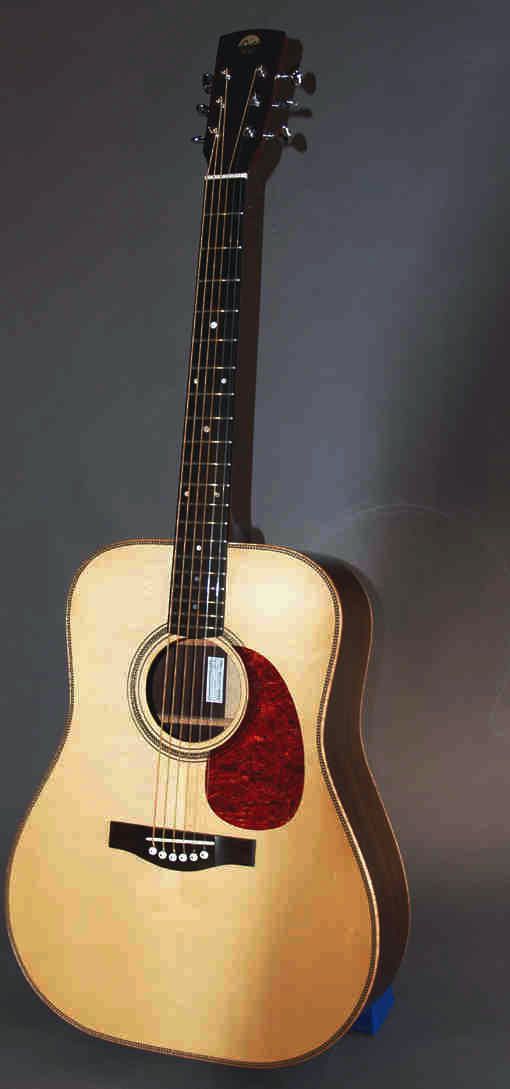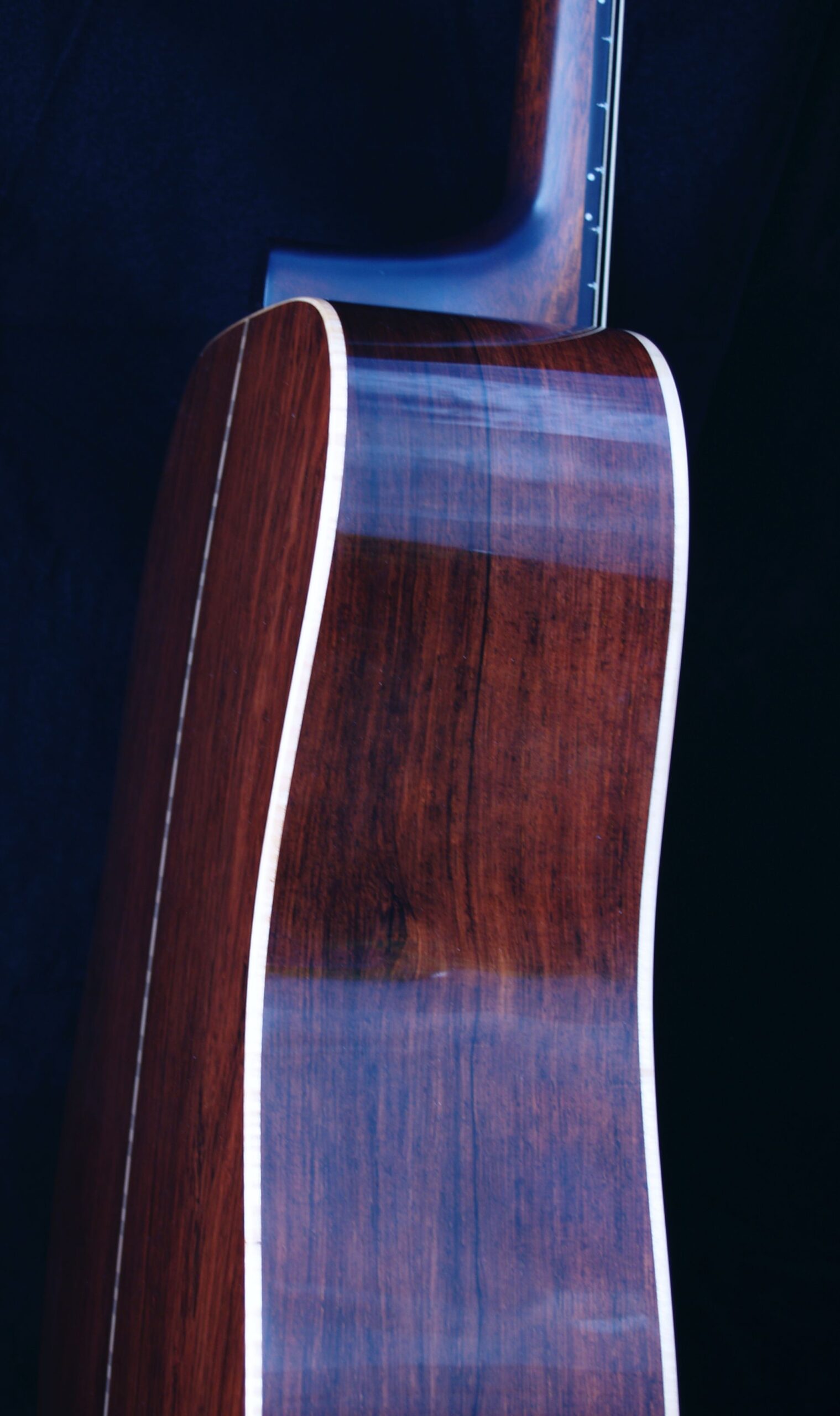Model D Details
D stands for Dreadnaught or Dreadnought if you’re from the U.S. This 14 frets to the body shape instigated my the C.F. Martin company in the mid 1930s is the most copied guitar shape to this day. This probably due to the fact that when Japanese factories were setting up production in the 1950s and 60s Elvis Presley and many other stars in popular music were seen on television using the “dread”. Originally designed as a loud, bass-heavy guitar for use in church singing, played standing up, it found favour with Bluegrass musicians with its strong basses and bright trebles. Initially with a forward X brace and scalloped bracing in the 1930s it had a very scooped midrange profile which stayed out of the way of voices, fiddles, mandolins, banjos etc but remained a beautiful rich presence in the mix. To accomodate heavier strings in the 1950s the bracing was left without scalloped profiles and shifted back towards the tail to better resist the torque of heavy strings on the bridge. Modern players often prefer this more midrange-present sound. I often advise clients that the guitar was designed to be played standing. By the time many players can afford a good dreadnaught, they’re sitting down in circles and the wide, deep body makes it hard on the shoulder of the picking arm. Most of the inexpensive copies of this model are made without regard to what the guitar can really do if built properly.




